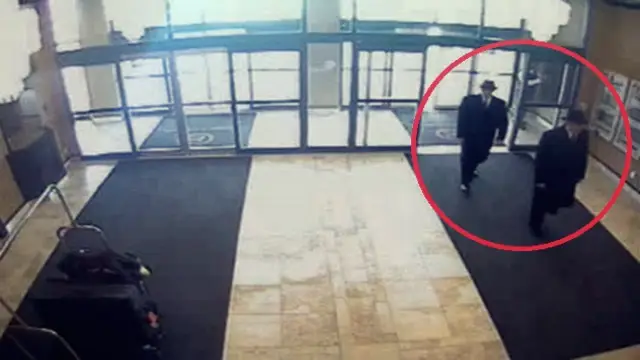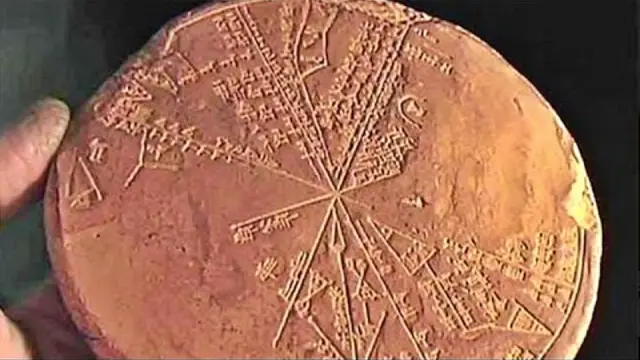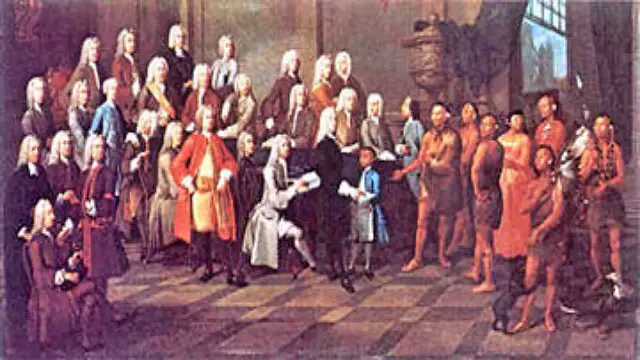Was the groundbreaking Roswell memory metal covertly introduced to industries and individuals poised to harness its potential benefits? How did this technological marvel make its way into the hands of those who could exploit its unique properties, all while concealing its origin? Why did government psychics engage in peculiar “mind-over-matter” experiments with Nitinol, the shape-recovery metal? Unveiling this hidden chapter of history sheds light on the enigmatic answers to these longstanding questions.
Roswell’s Memory Metal
Beneath the surface of the Roswell incident lies a hidden tale, one that involves the mysterious memory metal discovered among the crash debris. The narrative, shrouded in secrecy, unfolds as we delve into the remarkable properties and clandestine origins of this extraordinary material.
Contrary to the officially endorsed history, the true chronicle of Nitinol’s discovery challenges established accounts. The memory metal, composed of Nickel and Titanium, demonstrated an unparalleled ability to “remember” its original shape when deformed. Historical footnotes from military studies, coupled with the persistent absence of actual reports despite exhaustive searches, hint at a deliberate effort to suppress information.
Our journey into the Roswell-Battelle Connection reveals that Wright Patterson Air Force Base engaged Battelle Memorial Institute to investigate memory metal, immediately following the 1947 Roswell crash. Driven by the quest to comprehend this otherworldly substance, we encounter a series of corroborating elements, including footnotes within military studies, revelations from USAF Generals, and a senior Battelle scientist’s acknowledgment of his role in analyzing the UFO crash debris.
Delving into the deep past, we uncover the 1894 report by Cyrus Thomas and Thomas Powell of the Bureau of Ethnology, narrating the discovery of large human skeletal remains in Roane County, Tennessee. The pattern of inexplicable findings, often in the late 1800s, foreshadows the “giant boom” that gripped the late nineteenth century. The Smithsonian’s involvement in reporting such anomalies adds another layer to the mystery, leaving us to ponder why these discoveries, if once commonplace, have become rare in modern times.
As we navigate through history, the narrative expands to the 1960s, with zoologist Ivan T. Sanderson’s account of giant skeletons found on the Aleutian island of Shemya during World War II. The intriguing twist lies in the alleged involvement of the Smithsonian Institution in retrieving these remains, yet no official record exists, prompting Sanderson to question whether there is a reluctance to rewrite historical textbooks.
Shifting our focus to giants in folklore, we explore a rich tapestry that weaves together various mythologies and tales, from Greek mythology to the legends of Jack the Giant Killer and the Abominable Snowmen. The keywords intertwine seamlessly, connecting disparate threads into a comprehensive exploration of the fascination with giant figures throughout history.
In a parallel revelation, the Roswell memory metal narrative takes an unexpected turn toward Nitinol, a shape-recovery alloy traditionally credited to a chance discovery in the early 1960s. However, a trail of evidence leads us back to the late 1940s when Battelle Memorial Institute, contracted by Wright Patterson Air Force Base, initiated studies on a Nickel-Titanium alloy. The true history of Nitinol emerges, veiled in deliberate obscurity and mired in discrepancies.
The sprawling landscape of secrets surrounding Nitinol’s “official history” becomes apparent as we dissect the varying accounts of its discovery. The official co-inventors, Drs. Wang and Buehler, provide conflicting timelines, and a web of misinformation obscures the real story behind this revolutionary alloy.
The compelling saga of Nitinol unfolds, revealing an intricate web of hidden agendas, deliberate compartmentalization, and a carefully crafted narrative to obscure its true origin. The material’s journey from the Roswell debris to military studies, and eventually to NASA’s realm, underscores its significance in advanced aerospace technology.
The intrigue deepens with mind-over-matter experiments conducted on Nitinol in the early 1970s. Dr. Fred Wang, a co-inventor of Nitinol, takes center stage as he explores the possibility of psychokinesis influencing the alloy’s shape-recovery properties. The mind’s energy, tested as a catalyst for morphing the metal, adds a surreal layer to the already extraordinary tale.
As we unravel the hidden meaning of memory metal, Nitinol transcends its technological applications, offering profound insights into the interplay of matter, energy, and mind. This morphing metal becomes a metaphor for adaptation, change, and the infinite potential inherent in the universe. The enigma of Nitinol connects the tangible with the cosmic, leaving us to ponder the transformative nature of existence.
Insight
Previous segments of this series divulged that Wright-Patterson Air Force Base enlisted the expertise of Battelle Memorial Institute in the immediate aftermath of the 1947 Roswell crash. Their mission: to conduct extensive studies on memory metal, specifically focusing on a Nickel and Titanium alloy. This alloy shared uncanny similarities with the material reportedly discovered at the Roswell crash site—an otherworldly substance that could “remember” its original shape even after being crumpled or deformed. The very base that commissioned these studies, Wright-Patterson, was the final destination for the Roswell debris.
Evidence supporting the Roswell-Battelle Connection was extracted from:
Footnotes embedded in military studies referring to a Battelle report on memory metal commissioned by Wright-Patterson in the late 1940s
The conspicuous absence of the actual reports, despite the presence of footnotes alluding to them, a mystery that persists despite concerted efforts
Corroborating statements from two USAF Generals, including one from Wright-Patterson, affirming the composition of the debris and the existence of analysis reports
A confession from a senior-level Battelle scientist, acknowledging his involvement in analyzing the UFO crash debris during his tenure at the institute
A historical tracing of technical literature on shape-recovery metals, ultimately leading back to Battelle and Wright-Patterson, to exotic metal reports from the late 1940s, and to the pivotal Roswell Incident
An insightful exploration of the life of Dr. Howard Cross, a metallurgist at Battelle, and his dual role as a UFO researcher, strongly suggesting his participation in the analysis of the debris
In this conclusive chapter, the clandestine history of memory metal is further unveiled, and the concealed significance of this extraordinary material is finally laid bare.
The accepted narrative surrounding memory metal is fundamentally flawed.
In the 1930s, European researchers conducting metal bendability and stress tests observed certain alloys, particularly those containing aluminum, displaying a form of “pseudo-elasticity.” The malleability of metal had been known since the early days of forging.
However, the pivotal shift occurred in the late 1940s when Battelle conducted studies for Wright Patterson, revealing the first exploration of a metal system with genuine “shape recovery” potential by the U.S. military.
This groundbreaking investigation followed the Roswell crash, where similar materials were reportedly discovered. Crucially, the Nickel-Titanium alloy, later known as Nitinol, emerged from these studies, becoming synonymous with “morphing metal.” Despite the conventional narrative attributing Nitinol’s discovery to chance in the early 1960s at the U.S. Naval Ordnance Lab in Maryland by Drs. Wang and Buehler, the true history of Nitinol remains intentionally obscured.
In reality, the initial exploration of this extraordinary alloy took place in the late 1940s at Battelle Memorial Institute in Ohio, contracted by Wright Patterson, the very base where the Roswell crash material was transported.
Discovery’s exact timeline remains shrouded in uncertainty.
The issue of Nitinol’s official discovery year is immediately apparent upon examining various sources. A simple Google search using any of the years 1958, 1959, 1960, 1961, 1962, or 1963 in conjunction with Nitinol reveals conflicting information, with different sources attributing different discovery years. Even the co-inventors, Buehler and Wang, have provided varying accounts of the year of Nitinol’s discovery during their time at the Naval Lab. Scientific journals and articles in the mainstream media also present conflicting years. When questioned by this author about the precise year of his co-invention, Wang responded with a perplexed laugh, confessing uncertainty and expressing the need to check the details.
The official narrative surrounding Nitinol’s discovery conceals a web of conflicting explanations and hidden agendas. Different reasons were purportedly behind its development, ranging from studies for re-entry aeronautic nose cones to tools for mine dismantling, and even submarine ship hull materials. The circumstances of Nitinol’s “accidental” discovery are equally convoluted, with various accounts describing experiments involving dent removal, heat treatments, and impromptu demonstrations during management meetings.
The secretive transfer of Nitinol technology, originating from the Roswell debris, further deepens the mystery. The enigmatic Dr. Howard Cross from Battelle Memorial Institute, likely involved in directing the Roswell debris analysis, had been providing technical information on specially-processed Titanium to the U.S. Navy as early as 1948. The missing 1949 Battelle report on Nickel-Titanium system, cited by Nitinol’s co-inventor Dr. Wang, hints at a hidden connection to the Roswell incident. The deliberate compartmentalization of information ensured that the true origins of this revolutionary material remained obscured, dispersed into various military projects under the guise of traditional metallurgical research.
As the memory metal technology advanced, NASA became a key player, independently retaining Battelle for further studies on Nitinol. The goal was clear – incorporate this morphing metal into spacecraft construction, echoing its extraterrestrial origins. The ultimate aim was to return the Roswell memory metal to outer space, and recent revelations confirm that NASA is actively pursuing the use of shape-recovery metals for their spacecraft.
A peculiar chapter in Nitinol’s history involves mind-over-matter experiments conducted by the U.S. government in the early 1970s. Dr. Fred Wang, Nitinol’s co-inventor, led tests to determine if psychokinesis could influence the shape-recovery material. The mind’s energy successfully induced changes in the metal, creating a permanent knot within it. These astonishing findings raise questions about the hidden potential of Nitinol and its implications for advanced control and navigation systems.
In the broader context, Nitinol and its morphing capabilities may hold the key to understanding reported morphing UFOs and the shape-shifting craft witnessed by many. The material’s inherent adaptability reflects the essence of change and the infinite potential within the universe. Memory metal, derived from the Roswell incident, encapsulates the intertwined nature of matter, energy, and mind, embodying the concept of constant transformation in the ever-changing cosmos. The hidden meaning of Nitinol goes beyond its technological applications, offering a glimpse into the profound relationship between matter and the universal forces that govern existence.



















